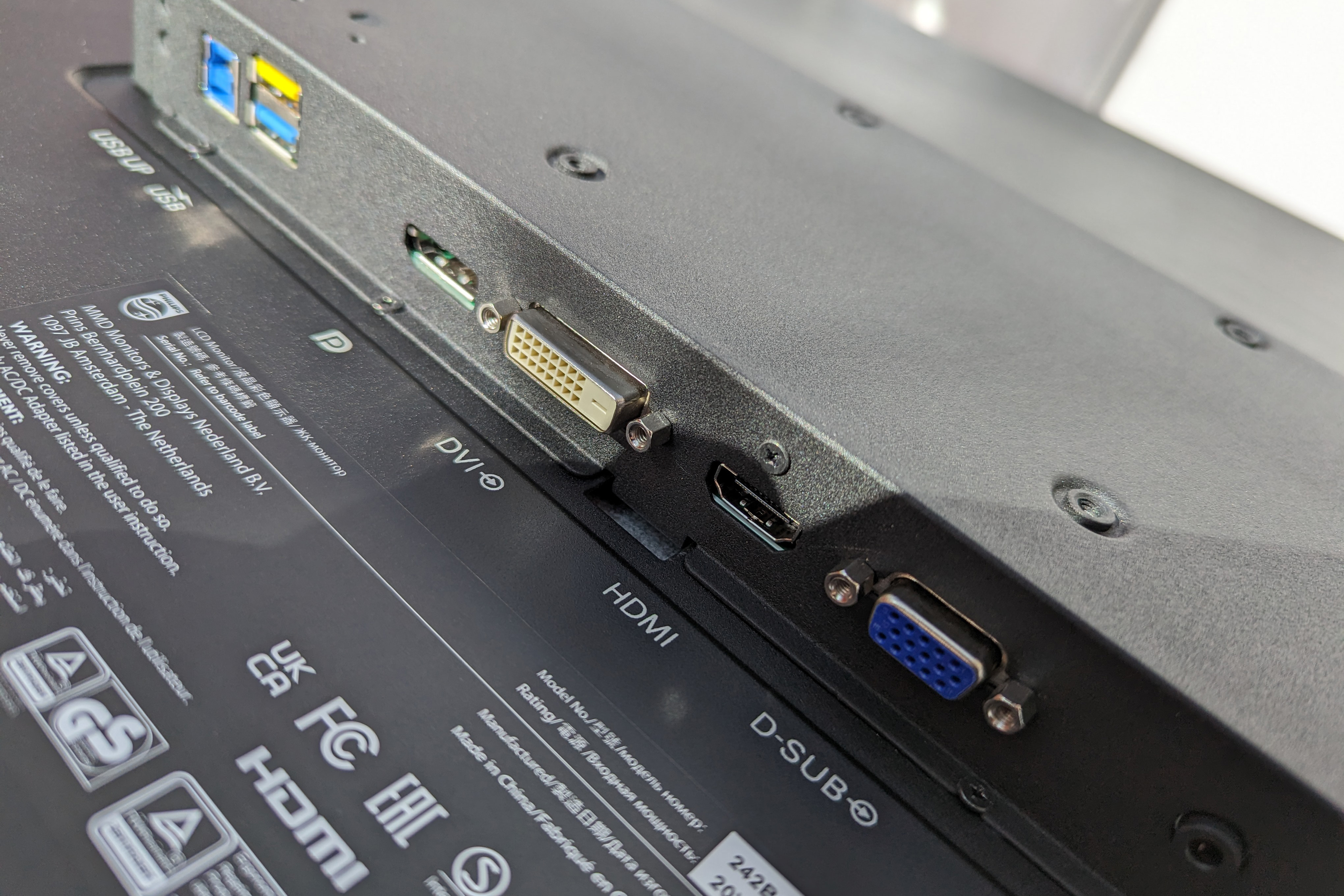
Why on Earth would you need a 24-inch waterproof touchscreen monitor with no stand? Is it for playing Slay the Spire in the bath? InDesign in the rain? Photoshop as you island hop?
Well, probably not. The wealth of inputs, and the remote control, that you find on the Philips 242B1TFL tell another story: it’s not a screen for your desk, but for information displays and public-facing uses where it may come in for the kind of harsh treatment uncommon while sitting safely in a studio.
As a result, it’s probably not the screen to get if you’re looking for something to accompany one of the best lightweight laptops or Macs for video editing. If you’re after a 24-inch 1080p monitor, there are better options out there. However, if your needs and the 242B1TFL’s features align, then it could be just the screen for you.
Design and features

From the front, the Philips 242B1TFL looks like a monitor from yesteryear with its fairly thick bezel. This impression continues as you move around the back, where you’ll find a VGA port like it’s 1997, and no stand. There's a VESA mount though, so you can attach it to an arm or a wall mount. It’s kinda heavy at over 5kg and is solidly built.
That VGA port is for hooking the screen up to the sort of embedded systems found in kiosks or sales points and is joined by DVI, HDMI and DisplayPort for a versatile set of inputs. There are some USB ports too, including one with fast charge, a 3.5mm audio output and a power connector – this screen, unusually, uses a separate power brick that helps reduce its bulk.
One of the ports will be used to connect the screen to the PC for touch input processing, while another is taken up by the remote control, which mirrors the controls for the screen’s OSD. It’s a thoughtful inclusion for a monitor that may be fitted inside a casing that affords little access to the small buttons used to alter the screen’s settings.
Apart from the large number of inputs and the remote control, little about this touchscreen monitor stands out. It’s not particularly bright – the protective coating eats into the brightness – and has a fairly standard colour response. The maximum refresh rate of 75Hz is nice to see, though there's no HDR, variable refresh rate, or picture-in-picture to take advantage of all those inputs.
Performance

As an LED-backlit IPS panel, you get nice colour reproduction and a wide viewing angle. As a desk monitor, it feels out of date, without the kind of brightness or colour reproduction or framerate we’ve come to expect from screens in this price bracket (this modest level of output probably helps keep the power consumption down). But of course, it isn’t a desk monitor, and its strengths are to be found elsewhere.
There's IP65 dust and water protection – that’s a high level of protection against dust and particle ingress, plus the ability to withstand low-pressure water jets – thanks to a seal around the edges of the front of the screen and a protective coating that has a rating of 7 on the MOHS hardness scale. That’s the same figure as quartz and only one point below hardened steel.
There's no such protection at the back, where you’ll find a cooling grille that would allow copious amounts of sand into the monitor’s workings, so you’ll need to make sure your housing keeps the nasties out from this direction. It’s sealed at the bezel, which means having wider edges to the screen actually comes in useful, giving more space to integrate the screen into the housing.
The touchscreen is a full 10-point multitouch system that’s ideal for collaborative use in something like a classroom or office environment, and it’s also perfect for using on-screen keyboards.
For the asking price of around £400 elsewhere, you’re usually looking at a 27in monitor with a higher resolution, but the Philips 242B1TFL isn’t a normal monitor, and for those that need its particular features it will be very tempting indeed.
Should I buy the Philips 242B1TFL?

No. Unless, of course, you’re building something that’s going to require customer interaction via a touchscreen. That’s the job the 242B1TFL was designed for, and it has the features, protection and versatility to be an ideal choice.







